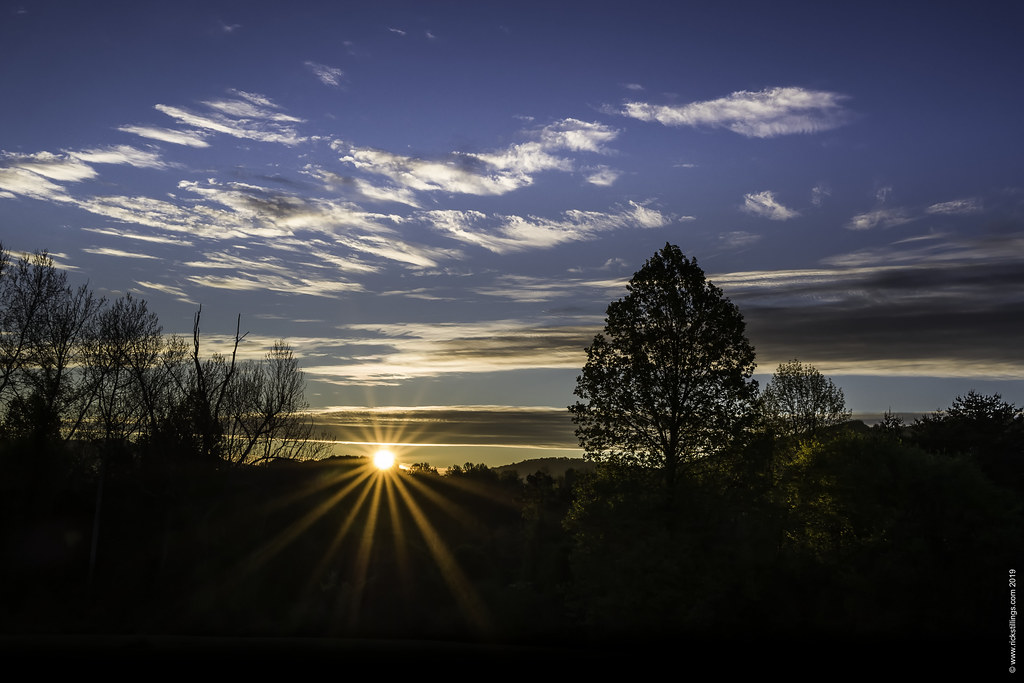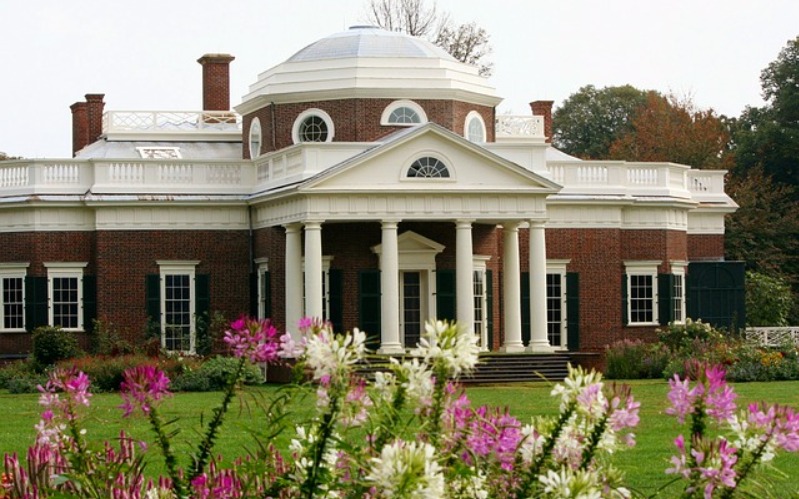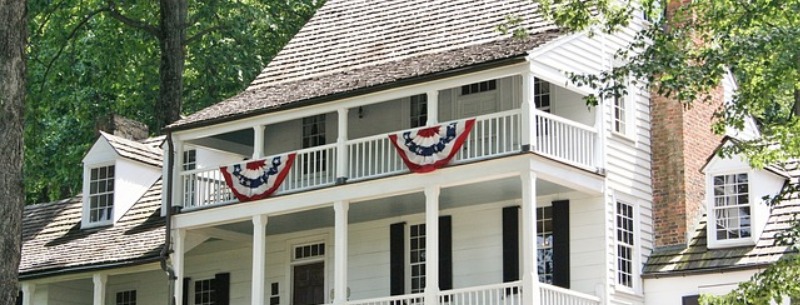2025 Charlottesville Visitors Guide
If you only have a couple of days to see Virginia, Charlottesville, seventy miles west of Richmond, should be near the top of your itinerary. Abounding in history, and holding some of the finest examples of early American architecture, it is at once small enough to feel comfortable in and large enough to have good restaurants and nightspots. Its compact, low-rise center is crisscrossed by magnolia-shaded streets and makes a fine area to amble around, particularly in the six pedestrianized blocks of Main Street, the site of the nightly town promenade. However pleasant the town, the compelling attraction is the legacy of Thomas Jefferson, whose home and final resting place, Monticello, stands atop a hill just east of town, overlooking the beautifully landscaped Neoclassical campus of the University of Virginia.

Traveling to Charlottesville
Amtrak trains from DC stop in Charlottesville at 810 W Main St, and Greyhound pulls in a few blocks away at 310 W Main St. Once you arrive, you can get to everything on foot, including the new downtown visitor center at 108 2nd St SE (434-977-6100). The more established visitor center (434-977-1783), well-signposted on Hwy-53 just south of I-64, houses a superb free exhibit called “Thomas Jefferson at Monticello,” and is an excellent starting point for a trip to Monticello. Bus #8 from Market Street downtown goes there.
Food & Drink
The best eating and drinking is to be had near the university and at the downtown mall. In between the two, Southern Culture, 633 W Main St, (434-979-1990) is an inexpensive local favorite, with a slightly retro-1950s feel and fabulous tuna steak.
Metropolitan, 214 W Water St. 434-977-1043), is a suitably pricey downtown restaurant, but the fresh fish is worth every dollar. Just north of the downtown mall at Fifth and Market Streets.
Tastings (tel 434-293-3663) offers grilled meats and a grand selection of wines, including many from the vineyards surrounding Charlottesville, while Virginia’s best selection of beers, plus a range of light meals, can be sampled a block further north at the Court Square Tavern, 500 E Jefferson St (tel 434/296-6111).
The C&O Restaurant, 515 E Water St (tel 434/971-7044), housed in an old railroad engineers’ diner, offers bistro-style food in its humming bar and more upscale French nouvelle cuisine in the upstairs dining room.
Being a college town, Charlottesville isn’t short of nightlife, whether at bars like the Outback Lounge, 110 N Fourth St (tel 434/979-7211), or in its two main nightclubs, Max’s, 120 S 11th St (tel 434-295-6299), and Starr Hill, 709 W Main St (tel 434/977-0017), which hosts live bands.
Monticello
One of America’s most familiar buildings – it graces the back of the nickel coin – Monticello, three miles southeast of Charlottesville on Hwy-53, was the home of Thomas Jefferson for most of his life. A visit provides a distinctive insight into the most intriguing of America’s founding fathers. Surrounded by acres of beautifully landscaped hilltop grounds, which once comprised an enormous plantation, with fine views out over the Virginia countryside, Monticello is a handsome house, whose symmetrical brick facade, centered upon a white Doric portico, belies the quirky irregularities of the interior – furnished as it was when Jefferson lived, and died, here.

To see Monticello you have to join one of the guided tours that leave continuously from the parking lot at the bottom of the hill. There’s often a line, especially at weekends, so try to get there as early as possible in the morning. From the outside, Monticello looks like an elegant, Palladian-style country home, but as soon as you enter the domed entrance hall, with its funhouse mirror and displays of fossilized bones and elk antlers (from Lewis and Clark’s epic 1804 journey across North America, which Jefferson sponsored as president), you begin to get a sense that Jefferson was a somewhat more interesting character than the sober statesman portrayed by most histories.
His love of gadgets and odd little contraptions, which fill the house, marked him as something of an eccentric: examples of these include the elaborate dual-pen device he used to make automatic copies of all his letters and the weather vane over the front porch which is connected to a dial so he could see which way the wind was blowing without having to step outside. Even Jefferson’s private chambers, which can also be seen on the tour, are rather interesting: he slept in a tiny alcove linking his dressing room and his study and would get up on the right side of the bed if he wanted to make some late-night notes, on the left if he wanted to get dressed. The upstairs rooms, where Jefferson’s daughter lived, are not open to the public.
On the grounds around the house, you get a feeling for how Monticello, a five thousand-acre plantation, really functioned. Extensive flower and vegetable gardens spread to the south and west, and a dank passage runs under the house from the kitchen and beer cellar (Jefferson was a keen home-brewer) to the remains of Mulberry Row, Monticello’s slave quarters.
Despite calling slavery an “abominable crime,” Jefferson owned almost two hundred slaves and recent research indicates that he may have also sired a child with one of them. At the south end of Mulberry Row, a grove of ancient hardwood trees surrounds Jefferson’s grave, marked by a simple stone obelisk; a footpath winds back down to the bottom of the hill.
University of Virginia
Though he wrote the Declaration of Independence and served as the third US president, Thomas Jefferson took more pride in having established the University of Virginia than in any of his other achievements, and after a visit, you may well understand why. In 1976 the university was officially designated the greatest piece of architecture in the US; it also reveals the ideology of its patron, who, besides designing every building down to the most minute detail, also planned the curriculum and selected the faculty. Uniquely for universities of the time, which functioned primarily as seminaries, the University of Virginia was not rooted in religious training, but emphasized instead a broadly based liberal arts education, not surprising as Jefferson had been one of the prime proponents of the separation of church and state.
The highlight and architectural focus of the campus is the redbrick, white-domed Rotunda , modeled on the Pantheon and completed in 1821 to house the library and classrooms. A basement gallery tells the story of the university, while upstairs three elliptical classrooms are linked by a richly decorated central hall. A staircase winds up to the Dome Room, where Corinthian columns rise to an ocular skylight. From the Rotunda, where 45-minute guided tours of the campus begin, twin colonnades stretch along either side of a lushly landscaped quadrangle, linking together a string of single-story student apartments and taller pavilions in which professors live and hold tutorials. While the overall feel is harmonious, each individual block is unique, the differing facades and rooflines designed to show off the various orders and styles of Neoclassical architecture.
Parallel to the quadrangle buildings, two further rows of dormitory buildings, the East and West ranges, front on to serpentine walled gardens. Edgar Allan Poe stayed in one of these dorms while studying at the University of Virginia in 1826, but was forced to drop out after his stepfather cut off his allowance, apparently because Edgar had lost all of his money gambling. His room – Number 13, of course – in the West Range is now restored to how it would have looked during his occupancy and is virtually the only campus interior, apart from the Rotunda, that you can visit.
